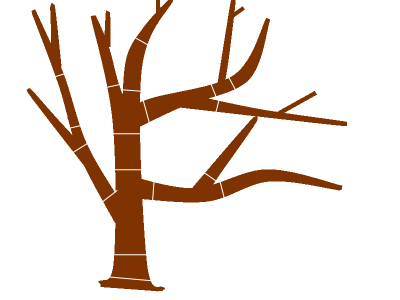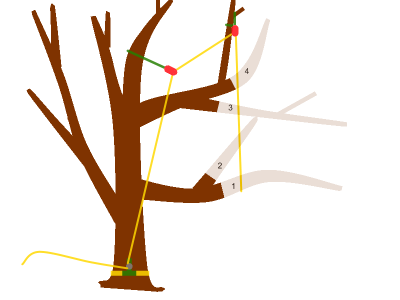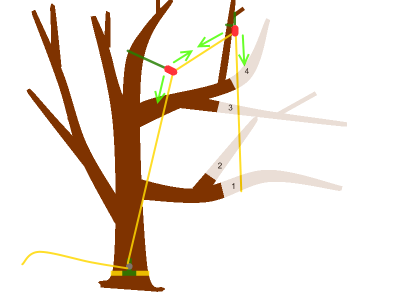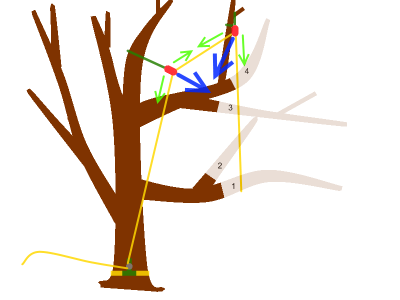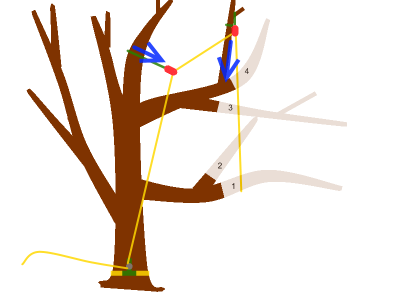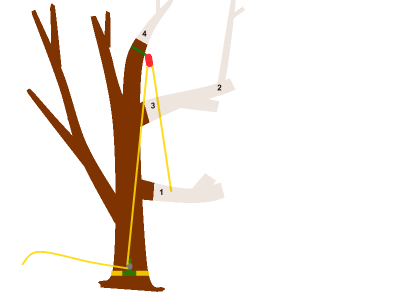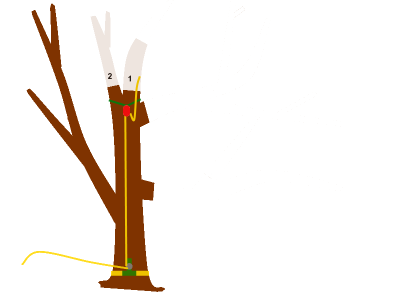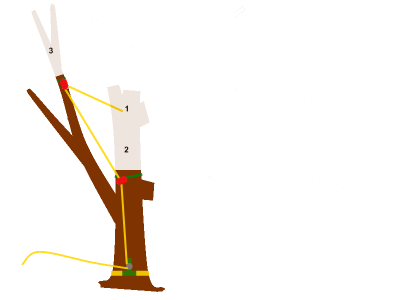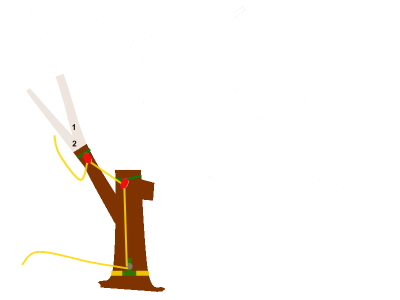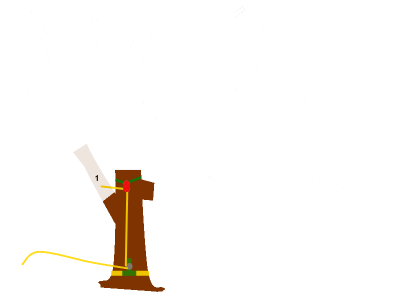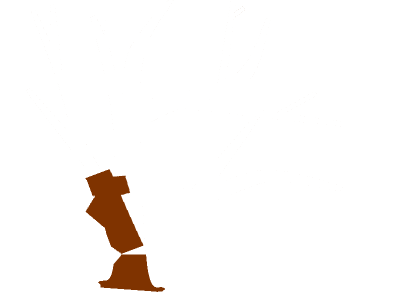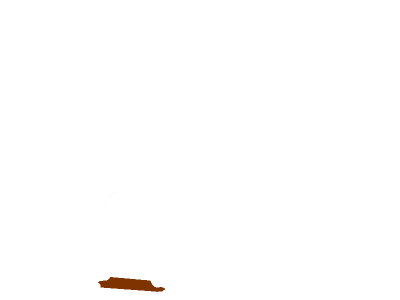A frequent question is how we plan to do the job. The drawings below are a generalization of our process. The tree can look different, but the process is always the same. When removing a tree, there are many options. Below we have detailed one proceedure on a drawing. Control is what this proceedure is about. It is not sufficient to allow gravity to have its way with a removal operation. There are frequently things of value under the tree. "Fences and bushes don't count" is not an acceptable approach to a tree removal operation.
|
- A removal always starts with a plan
- Our general tree drawing has 18 pieces
- The issue with a removal is how to get all that mass on the ground without causing damage or injury
- This mass can vary from a few hundred pounds to many tons (largest tree we ever removed was 40 tons of wood)
|
|
- Our control mechanism involves the use of special pulleys called blocks
- Blocks are intended to prevent damage to the rope that can cause a rope failure (break)
- the friction that develps when the rope is "crotched" over a branch is sufficient enough to melt the rope
- The drawing of the device on the base of the tree is the "nuts and bolts" of the control
- The device is merely a ballard that is mounted to the tree - made from aluminum to put controlled friction into the lowering system
- friction can also be placed into the system by taking wraps on the tree - this has the same friction melting probability as using branch crotches as a pulley
|
|
- There is a fair amount of basic physics principles at work
- Force pulls and pushes on the system in many ways
- Anytime things are lowered the force is at a minimum of doubled on the supporting tree
- The knowledge of what the tree as a component of this system can withstand is definitely needed information that comes with experience
- The green arrows indicate the different directions of force that occur when the system is used
- Cuts one through four will use this system arrangement
|
|
- The blue arrows is the direction of pull
|
|
- The arrows have been placed on the supporting wood tissue
|
|
- As the portions of the tree are removed, the placement of the block or blocks need to be moved
|
|
- This type of cut generates the highest forces in the system
- The pieces must "free fall" for a short distance before they can be slowed down
|
|
- lowering from a point above reduces the stress that is introduced into the system
|
|
|
|
- The final cut that will be lowered on a rope
- The less rope that is in a system, the higher the stress on the system
- Rope acts a shock absorber of sorts
- Ropes vary in elasticity and strength
- The less rope that is in the system the less absorbtion
|
|
- Felling a piece of the wood is an efficient way to get things down
- This is only done where there is space and a solid safety zone can be established
- A tight area to throw a log mearly means that you have to work some more of the log down
- Because a large percent of the mass of a tree is in the base, we would only rope below 20 feet if it was ABSOLUTELY necessary
- We use some special tricks to minimize damage when throwing a log including break cuts that are intended to absorb some of the energy of the log falling
|
|
|

